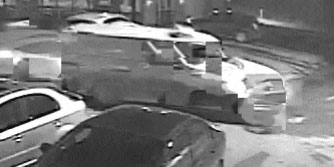Digital compression of video images is a common occurrence. There are legitimate and laudatory reasons for such compression. Among those reasons are the fact that more data can be stored in a smaller amount of storage space, data can be easily transmitted electronically, and data can be searched more readily. However, the first casualty of compression is detail and therefore, compression of digital images is a serious concern for anyone interested in obtaining detail from the images. This post deals with the impact of image compression on the use that may be made of such images in court.
Video image compression takes advantage of spatial and temporal redundancies that exist in natural moving imagery. Spatial redundancy refers to the principle that neighboring pixels within a video frame are more likely to be closer in value (ie. brightness and color) than not. Similarly, temporal redundancy refers to the principle that neighboring frames tend to have similar content that is either stationary or moving in a predictable manner. [i] Examples of different compression schemes include the following:
Compression Schemes [ii]
Full Frame Compression (Lossless) includes JPEG-like compression and wavelet compression. JPEG-like compression condenses images into small 8×8 pixel visible block-sized files. Visually, the original image is made up of many such blocks. Wavelet compression analyzes the entire image and groups similar frequencies together. Compression is achieved by eliminating all data over a specified frequency. Wavelet compression produces a soft picture that is somewhat out of focus but lacks the blockiness produced by JPEG-like compression.
Conditional Compression (Lossy) includes MPEG-like compression and H.263 and H.260+. Conditional compression focuses on the changes in the image, rather than constants. Forensically, this type of compression is problematic. Even in conditional compression, reference frames are subjected to JPEG-like compression, resulting in blockiness. Non-reference frames do not appear blocky. Further, the computer may not detect a change when one has actually occurred, resulting in an image that is inaccurate. For example, a car that is actually moving through the frame may still remain in its original position. This unpredictability poses significant problems for forensic video analysts.
Why Does Compression Matter?
Compression is necessary given the size of digital files. By eliminating data that is deemed redundant, storage of data becomes more manageable. It is neither practical nor economical to purchase and use expensive hard drives and servers as alternatives to digital compression. In many applications, compression may not pose a real concern. It all depends on the purpose for recording the images.
In the forensic video analysis discipline, when considering the admission of such evidence in court, only images that are fair and accurate will be of any value to the court. Depending on the purpose for which the digital image evidence is being used, compression can be problematic in obtaining accurate and usable images for evidential purposes. Some compression technologies limit the amount of detail in the images and present limitations as to the amount of processing that can be utilized to clarify those images and accentuate available details. All compression algorithms remove data from the file and some are more effective than others in reconstructing the data for viewing. With digital video, compression removes the higher frequencies from the video signal and it is this data that forensic video analysts require in order to draw detail from the images. Generally, the higher the compression ratio, the more seriously image quality is affected. Compression can produce artifacts that can mask the original information or contaminate it with movement, patterns, outlining, etc.
Compressed images that exhibit ghosting or artifacts in such a way that the images have been substantially changed are likely to be ruled inadmissible on the basis that they do not accurately reflect reality. The danger with such images is that if admitted into evidence without the benefit of a qualified forensic video analyst to interpret the images, the wrong result may be achieved at trial because of questionable evidence. For example, the untrained eye may assume that the video image shows a weapon in the hand of a suspect when in fact it is just a video artifact. It is very common to draw incorrect conclusions about what a video image actually shows and hence the need for trained forensic video analysts to assist the courts. We are always seeking the truth.
While compression is referred to occasionally in American and Canadian cases, little of substance has been written by courts on these subjects. They remain live issues nonetheless. Case law that does develop on these advanced technical issues will need the benefit of knowledgeable witnesses and quality forensic evidence. A poorly qualified witness presenting inferior or inaccurate video evidence can cause the court to give an admissibility ruling that can be far-reaching and negative in tone. Image compression is an important consideration for anyone relying on video images to make substantive decisions about an investigation or a case before the court.
[i] Isnardi, M., Gong, Y., and Imparato, N., Video compression for security applications, Security Technology and Design, September 2003.
[ii] As described by Garrett, R., Boarding the digital video train, Law Enforcement Technology, 28, June 2004
